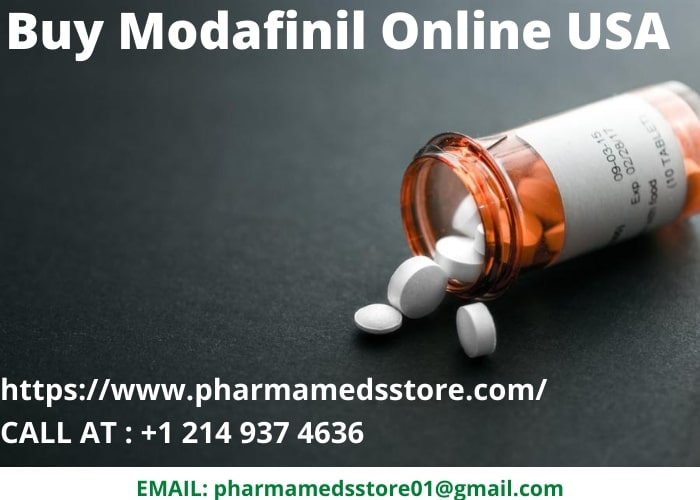leonorfsf8137
About leonorfsf8137
Modafinil: A Case Research on Its Use, Advantages, And Market Dynamics
Modafinil, a wakefulness-promoting agent, has garnered important consideration since its approval by the FDA in 1998 for the treatment of narcolepsy, obstructive sleep apnea, and shift work sleep disorder. This case study explores the pharmacological properties of modafinil, its therapeutic functions, off-label uses, and the dynamics of its market, together with the implications of its sale and distribution.
Pharmacological Overview
Modafinil acts primarily as a central nervous system stimulant, enhancing wakefulness and cognitive perform with out the everyday stimulant unwanted side effects related to amphetamines. Its actual mechanism of motion is not fully understood; nevertheless, it’s believed to involve the modulation of neurotransmitters resembling dopamine, norepinephrine, and histamine. In contrast to traditional stimulants, modafinil has a decrease potential for abuse and dependency, making it a gorgeous possibility for individuals searching for cognitive enhancement or therapy for sleep disorders.
Therapeutic Functions
- Narcolepsy: Modafinil is extensively recognized for its efficacy in treating narcolepsy, a chronic sleep disorder characterized by extreme daytime sleepiness and sudden sleep attacks. If you have any kind of questions regarding where and the best ways to utilize buy modafinil online for sale, you can contact us at our web site. Clinical research have proven that modafinil significantly reduces daytime sleepiness and improves general alertness in patients.
- Obstructive Sleep Apnea: Patients with obstructive sleep apnea typically expertise extreme daytime sleepiness regardless of using continuous optimistic airway pressure (CPAP) therapy. Modafinil has been proven to boost wakefulness in these patients, bettering their quality of life.
- Shift Work Sleep Disorder: For individuals working non-traditional hours, modafinil may help mitigate the results of disrupted sleep patterns, allowing for higher performance throughout waking hours.
Off-Label Makes use of
Beyond its authorized indications, modafinil has gained reputation for a variety of off-label uses, notably in the realm of cognitive enhancement. Many students, professionals, and people in excessive-stakes environments have turned to modafinil to enhance focus, memory retention, and total cognitive efficiency. Analysis has indicated that modafinil could enhance govt features, akin to planning and choice-making, making it appealing for those looking for a competitive edge.
Market Dynamics
The marketplace for modafinil has expanded significantly through the years, pushed by its increasing reputation for both legitimate medical use and off-label cognitive enhancement. A number of elements affect the sale and distribution of modafinil:
- Prescription Laws: In lots of countries, modafinil is classified as a prescription medication, which means it could possibly only be obtained via a licensed healthcare provider. This regulatory framework goals to ensure that the drug is used safely and effectively, given its potential for misuse.
- On-line Pharmacies: The rise of on-line pharmacies has made modafinil extra accessible to shoppers. Many people search to buy modafinil online with out a prescription, typically from international suppliers. While this offers comfort, it additionally raises concerns about the standard, safety, and legality of the merchandise being bought.
- Global Market Trends: The global modafinil market is projected to develop considerably, pushed by growing consciousness of sleep disorders and the rising demand for cognitive enhancers. The North American market, in particular, is anticipated to dominate attributable to a higher prevalence of sleep disorders and a extra intensive healthcare infrastructure.
Moral Considerations
Using modafinil for cognitive enhancement raises several ethical questions. While proponents argue that it provides a protected different to conventional stimulants and can enhance productiveness, critics highlight the potential for unfair benefits in tutorial and skilled settings. The normalization of cognitive enhancers could lead to societal pressures to make use of such substances to compete, elevating problems with equity and entry.
Unwanted side effects and Risks
While modafinil is generally properly-tolerated, it’s not without unintended effects. Widespread side effects embody headache, nausea, dizziness, and insomnia. In rare cases, critical hostile results akin to pores and skin rashes and allergic reactions can occur. Moreover, people with a history of cardiovascular issues or sure psychiatric situations should train warning when using modafinil.
Conclusion
Modafinil represents an enchanting case research in the intersection of pharmacology, ethics, and market dynamics. Its effectiveness in treating sleep disorders and potential for cognitive enhancement have made it a invaluable instrument for many people. Nonetheless, the implications of its widespread use, significantly in non-medical contexts, warrant cautious consideration. As the marketplace for modafinil continues to evolve, stakeholders, together with healthcare suppliers, policymakers, and shoppers, must navigate the complexities surrounding its sale and use to ensure that it is utilized safely and responsibly.
In abstract, modafinil’s journey from a prescription remedy to a sought-after cognitive enhancer displays broader developments in society’s method to productivity and efficiency. As analysis continues and the market adapts, ongoing dialogue about the moral implications and regulatory frameworks surrounding modafinil will be essential in shaping its future.
No listing found.

